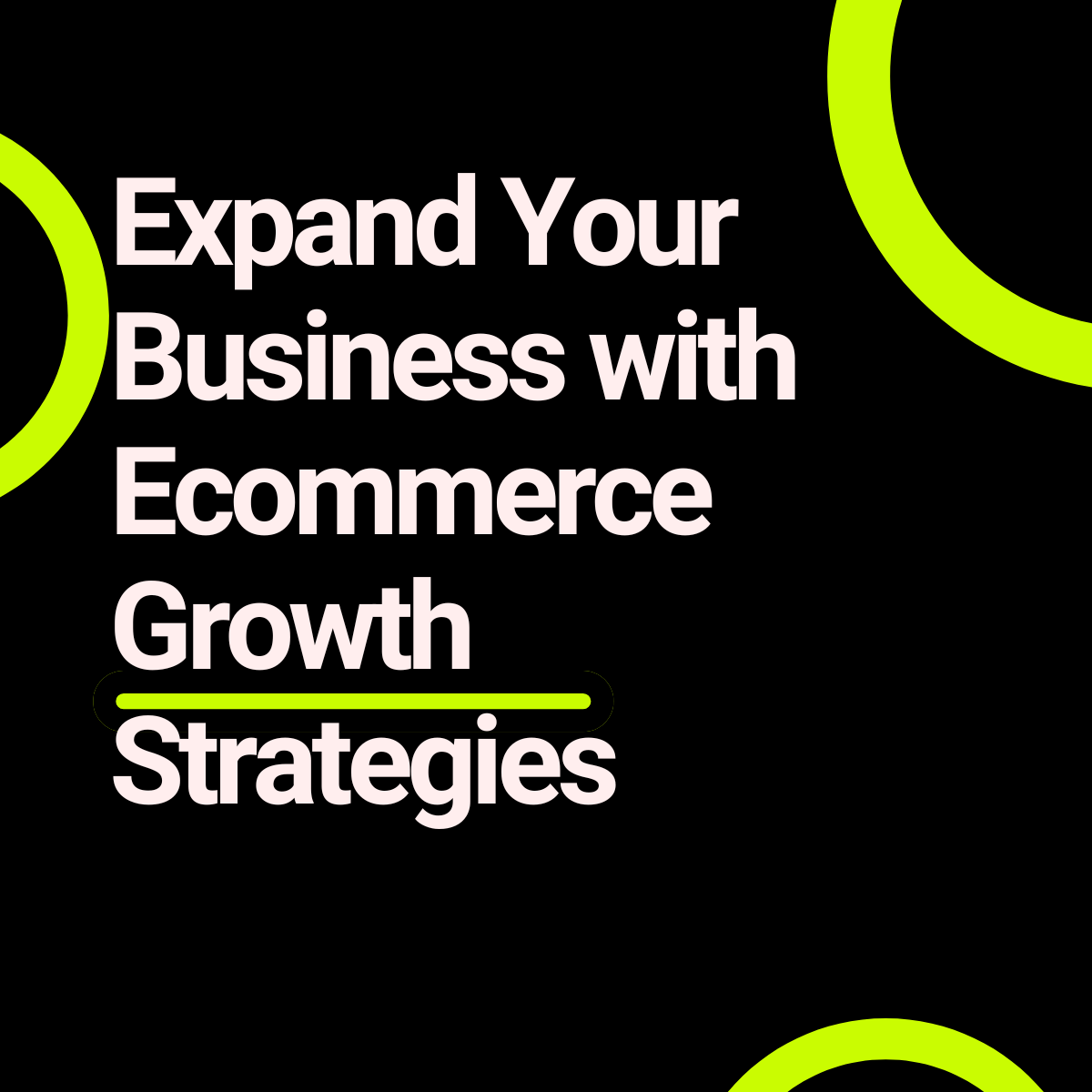Expanding your business in the world of ecommerce requires effective ecommerce growth strategies, careful planning, and consistent execution. With the growing number of online shoppers and competition, businesses must focus on growth strategies that scale operations while increasing profitability.
1. Optimize Your Online Store
Your ecommerce website is the foundation of your business. A seamless, user-friendly online store attracts customers and improves conversion rates. The following areas are critical for website optimization:
a. User Experience (UX)
- Intuitive navigation: Make it easy for customers to find products by using clear menus, search functions, and filters.
- Responsive design: Ensure your site works on mobile, tablet, and desktop devices, as mobile commerce continues to grow.
- Fast load times: Slow websites result in higher bounce rates. Use image optimization, caching, and CDN integration to reduce load times.
- Secure checkout: Build trust with a secure, straightforward checkout process that minimizes cart abandonment.
b. SEO Optimization
- Keyword research: Identify and implement relevant keywords into your product descriptions, meta tags, headers, and URLs to improve organic search rankings.
- On-page optimization: Use optimized title tags, meta descriptions, H1/H2 tags, and internal links to boost visibility.
- Technical SEO: Ensure your site’s architecture is clean, free of broken links, and regularly indexed by search engines.
c. Mobile Optimization
- Mobile-first indexing: Google prioritizes mobile versions of websites, so make sure your mobile experience is seamless.
- Tap-friendly navigation: Ensure clickable elements are easy to tap on small screens.
- Mobile payments: Offer popular mobile payment solutions like Apple Pay and Google Wallet for easier transactions.
2. Leverage Data-Driven Marketing
Data is a powerful tool for ecommerce growth. By understanding your customers, you can make informed decisions that drive targeted marketing and sales.
a. Customer Segmentation
- Segment your customers based on behavior, demographics, and purchasing habits to deliver more personalized experiences.
- Use CRM tools to track and analyze customer data to improve segmentation.
b. Personalized Marketing
- Email marketing: Send targeted emails based on customer behavior, such as cart abandonment reminders or product recommendations.
- Dynamic product recommendations: Use AI to suggest relevant products to customers based on past browsing or purchase behavior.
- Retargeting ads: Use retargeting campaigns to re-engage visitors who left your site without purchasing.
c. Predictive Analytics
- Use predictive analytics tools to forecast trends, optimize inventory, and understand customer lifetime value.
- Analyze purchase patterns to tailor marketing efforts and predict future customer needs.
3. Expand Sales Channels
Diversifying your sales channels is essential to ecommerce growth. By selling on multiple platforms, you can reach more customers and increase revenue.
a. Marketplace Integration
- Amazon, eBay, and Etsy: These platforms offer access to millions of potential customers, and you can easily manage your inventory across multiple platforms.
- Social commerce: Platforms like Instagram, Facebook, and TikTok allow for in-app purchases, expanding your reach to social media users.
b. Omnichannel Strategy
- Synchronize your sales, marketing, and customer service across multiple channels for a unified customer experience.
- Implement Buy Online, Pick-Up In Store (BOPIS) options if you have a physical presence.
c. Global Expansion
- Utilize cross-border ecommerce tools to sell internationally, offering localized payment methods, currency options, and shipping solutions.
- Partner with fulfillment providers that offer international shipping to scale operations globally.
4. Boost Customer Retention and Loyalty
Customer acquisition can be expensive, so retaining existing customers is a highly efficient growth strategy. Focus on building customer loyalty and maximizing lifetime value.
a. Loyalty Programs
- Create a loyalty program that rewards customers for repeat purchases, social sharing, and referrals.
- Offer tiered rewards for higher spending to incentivize continued purchases.
b. Subscription Models
- Subscription boxes or regular delivery services keep customers coming back for consistent revenue.
- Offer discounts or exclusive content to subscribers as an added incentive.
c. Exceptional Customer Service
- Provide omnichannel customer service (live chat, email, phone) to resolve issues quickly and build trust.
- Use customer feedback tools to gather insights and improve the overall shopping experience.
5. Innovative Marketing Strategies
To outpace competitors, ecommerce businesses need innovative marketing approaches that resonate with their audience and stand out from the crowd.
a. Influencer Marketing
- Collaborate with influencers in your niche to promote your products to their followers, generating both traffic and credibility.
- Micro-influencers often have higher engagement rates and more authentic connections with their audience.
b. Content Marketing
- Create engaging content like blog posts, how-to guides, and videos to drive traffic and establish your brand as an authority.
- Use SEO-optimized content to improve organic rankings and generate long-term traffic.
c. Affiliate Marketing
- Build an affiliate program where influencers and bloggers can promote your products in exchange for a commission.
- Track the performance of your affiliates to optimize your program and maximize ROI.
Table: Ecommerce Growth Strategies Overview
| Strategy | Key Tactics | Benefits |
|---|---|---|
| Website Optimization | UX design, SEO, mobile optimization | Better user experience, higher rankings |
| Data-Driven Marketing | Segmentation, personalized marketing, analytics | Higher conversions, better targeting |
| Expand Sales Channels | Marketplace, omnichannel, global expansion | Increased reach, diversified revenue |
| Customer Retention | Loyalty programs, subscriptions, customer service | Lower acquisition cost, higher LTV |
| Innovative Marketing | Influencers, content, affiliate marketing | Improved brand awareness, traffic |
Conclusion
Ecommerce growth requires a strategic blend of optimization, marketing, and customer retention efforts. By focusing on expanding your sales channels, leveraging data-driven marketing, and optimizing your website for user experience and SEO, you can significantly increase your ecommerce business’s reach and profitability. Implementing these comprehensive strategies will not only help you grow but also differentiate you from competitors in a crowded online marketplace.

